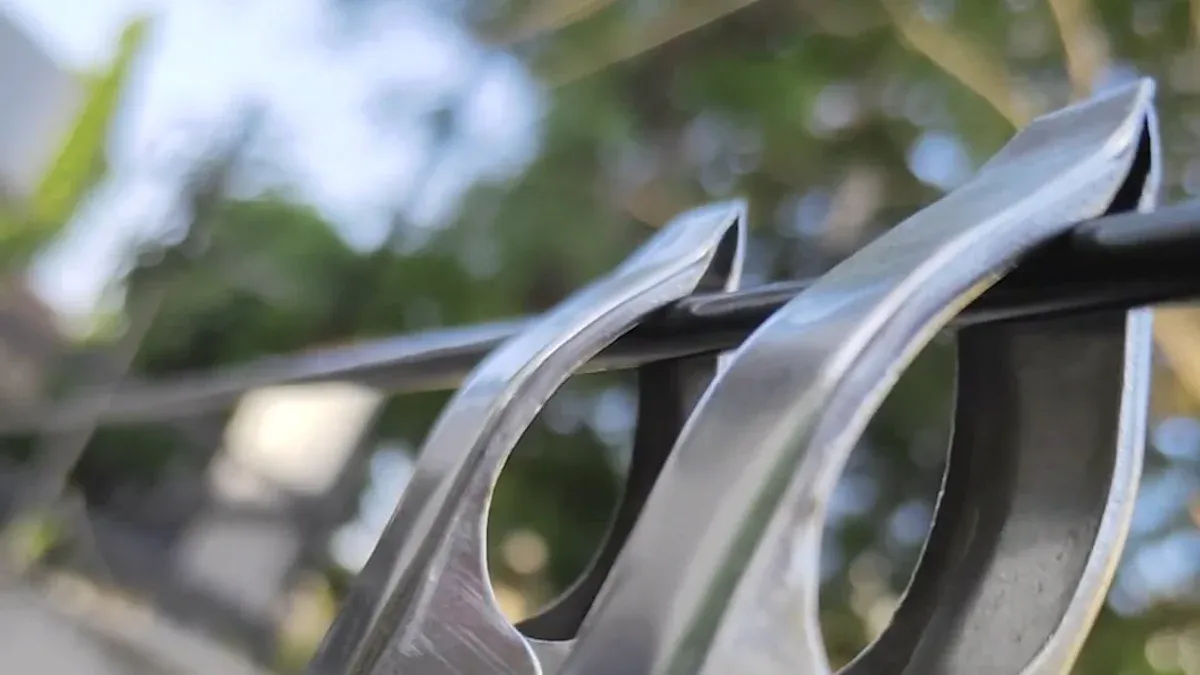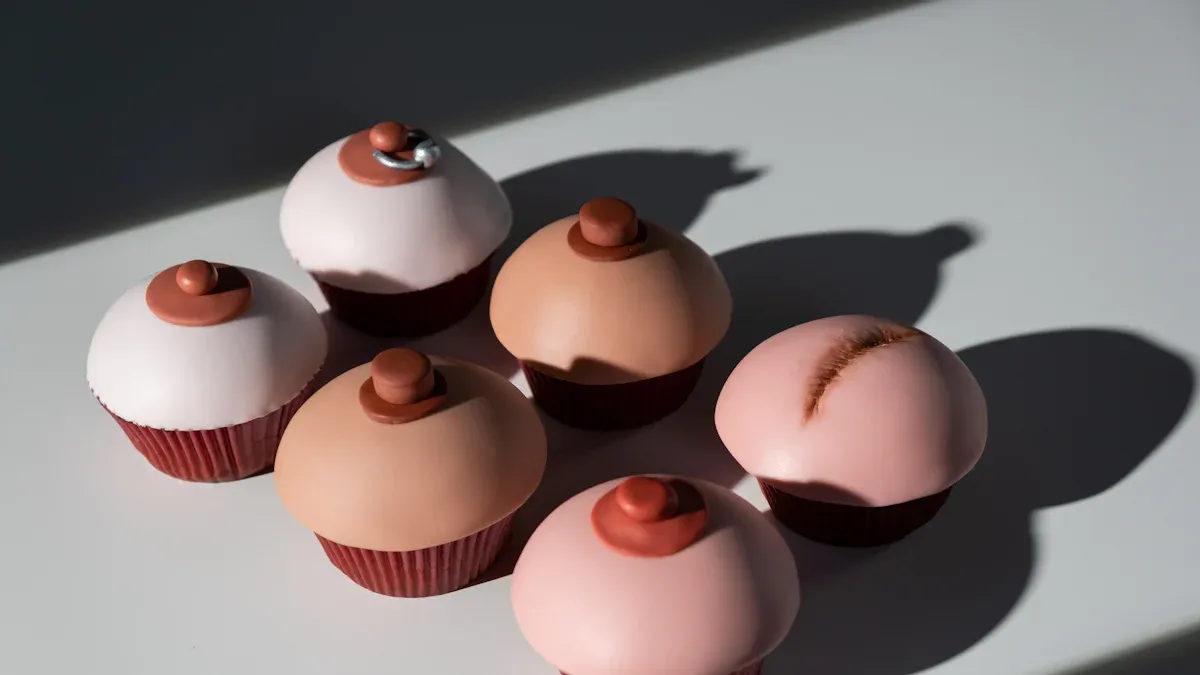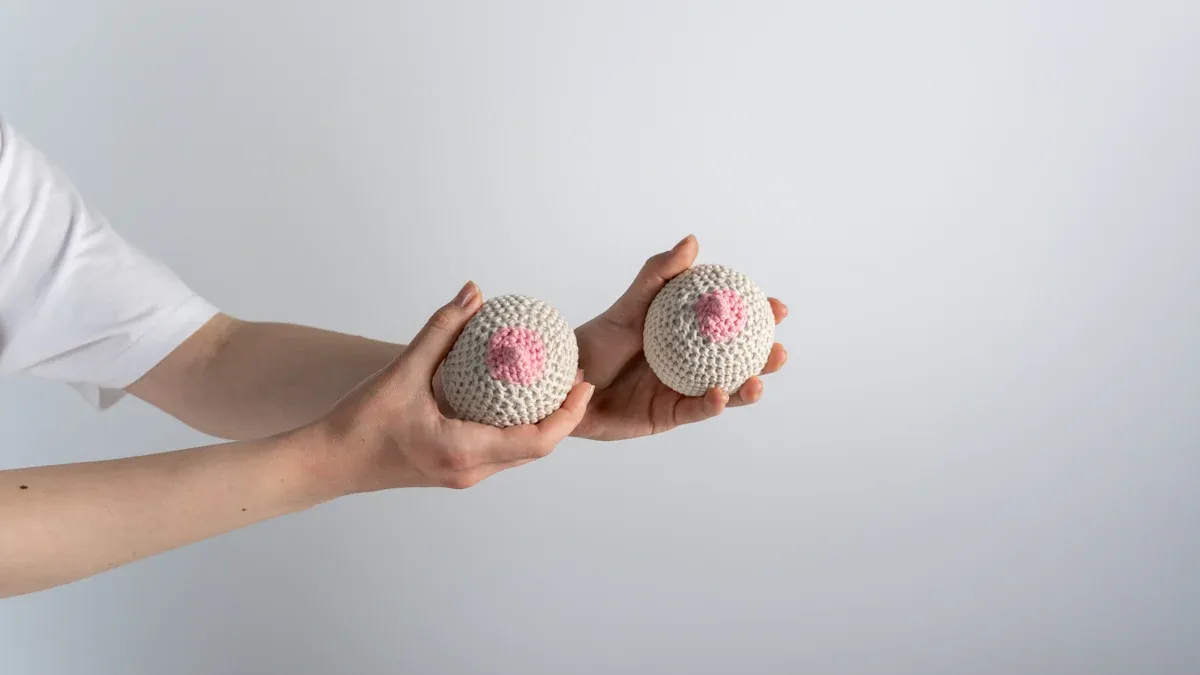
Trying out nipple clamps for the first time can make you feel a bit nervous. Many people worry about pain, discomfort, or not knowing how tight is too tight. You might wonder if the sensation will be too strong or if you could hurt yourself. Remember, everyone’s body reacts differently, so it’s okay to feel unsure. Start slow, talk openly with your partner, and always listen to what your body tells you. With the right approach, you can explore safely and find what feels good for you.
Key Takeaways
-
Begin with gentle nipple clamps that you can adjust. Make sure they have soft tips. This helps you control pressure and stop pain. - Always wash your clamps and hands before and after use. This keeps things safe and clean. - Keep your first sessions short, about 10 minutes or less. Check your nipples often for any pain or changes. - Talk with your partner and set clear rules. Pick a safe word before you use clamps. - Take off clamps slowly and gently. Soothe your nipples after to keep them healthy and comfy.
Choosing Nipple Clamps

Types for Beginners
When you start exploring nipple clamps, you want something gentle and easy to control. Adjustable clamps are the best choice for beginners. These let you change the pressure so you can find what feels right for you. Here are some popular types:
-
Tweezer clamps: These have a sliding ring to adjust the tightness. They start with a light grip and often have rubber tips for comfort. Many beginners love them because they feel gentle and easy to use.
-
Alligator clamps: These look like tiny clothespins. Some have rubber covers and screws to adjust the pressure. If you pick a version with rubber tips, you get more comfort and less risk of pinching.
-
Butterfly clamps: These are adjustable and give you control over the pressure. They also have a unique look.
-
Magnetic clamps are not a good choice for your first time. They can feel very intense and you cannot adjust the pressure easily.
Tip: Start with gentle, adjustable clamps with soft tips. Always check how your body feels and go slow.
|
Clamp Type |
Comfort Level |
Adjustability |
Good for Beginners? |
|---|---|---|---|
|
Tweezer |
High |
Yes |
Yes |
|
Alligator |
Medium-High |
Yes (if rubber-tipped) |
Yes (if adjustable) |
|
Butterfly |
High |
Yes |
Yes |
|
Magnetic |
Low |
No |
No |
What to Look For
When you shop for nipple clamps, keep these things in mind:
-
Pick clamps with adjustable tension. This helps you find the right balance between sensation and comfort.
-
Look for soft, body-safe materials like silicone, rubber, or stainless steel. These materials help prevent skin irritation.
-
Make sure the clamps have a comfortable grip. Rubber or silicone tips feel softer and protect your skin.
-
Clean your clamps before and after use to keep things hygienic.
-
Start with short sessions—about 10 minutes. Check how your nipples feel and take breaks if needed.
Note: If you share clamps, always sanitize them first. Your safety and comfort come first!
Preparation
Hygiene
Cleanliness matters a lot when you try something new. You want to keep your body safe and healthy. Before you use any clamps, wash your hands with soap and water. This step helps stop germs from spreading. Clean the clamps with warm water and mild soap or a toy cleaner. Dry them well with a clean towel. If you share clamps with someone, always sanitize them before and after each use. This habit keeps you both safe.
Check your nipples for cuts, sores, or irritation. If you see anything unusual, wait until your skin heals. Using clamps on broken skin can cause pain or infection. Choose clamps made from body-safe materials like silicone, rubber, or stainless steel. These materials are easy to clean and gentle on your skin.
Tip: Keep a soft cloth or wipes nearby. You can use them to clean up quickly if needed.
Communication
Talking with your partner makes everything better. You both need to feel safe and comfortable. Start by sharing your thoughts and feelings about trying nipple clamps. Ask your partner what they want and how they feel. Set clear boundaries together. You can even write down your limits or use a checklist to help you both remember.
Sex educators suggest these steps for good communication:
-
Set limits before you start.
-
Check in with each other often.
-
Make sure both of you say “yes” before moving forward.
-
Keep talking during the experience.
Carol Queen, a well-known sex educator, says that consent is not just a one-time thing. You need to keep checking in and talking as you go. Julia Feldman also believes that open conversations about comfort and desires lead to better experiences. When you talk honestly, you both feel more relaxed and ready to explore.
Note: If you ever feel unsure or uncomfortable, say so right away. Your feelings matter.
Application

Placement Steps
Getting started with nipple clamps can feel a little intimidating, but you can make it simple by following a few easy steps. Here’s how you can apply them safely:
-
Warm up your nipples. Gently massage or roll your nipples between your fingers for a minute or two. This helps increase blood flow and makes the experience more comfortable.
-
Clean and dry the area. Make sure your nipples are clean and dry before you begin.
-
Open the clamp fully. Hold the clamp open so you can place it easily.
-
Position the clamp. Slide the clamp to the base of your nipple, right where the areola meets the skin. This spot is less sensitive and safer for pressure.
-
Tighten slowly. Close the clamp gently and tighten it little by little. Pause and check how it feels. If you feel any sharp pain, loosen the clamp right away.
-
Start with short sessions. Leave the clamps on for just 1-2 minutes the first time. You can slowly increase the time as you get used to the sensation.
Tip: Always talk with your partner and agree on a safe word before you start. This way, you both know how to stop if anything feels wrong.
Adjusting Pressure
Finding the right pressure is key to enjoying nipple clamps. You want to feel a gentle squeeze, not pain. Here’s how you can adjust the pressure for comfort and safety:
-
Begin with the lightest setting on adjustable clamps. You can always make them tighter later if you want more sensation.
-
Use clamps with soft, rubber, or silicone tips. These spread out the pressure and protect your skin.
-
Avoid tightening the clamps too quickly. Take your time and let your body adjust to the feeling.
-
After you put on the clamps, wait 15-30 seconds and check how your nipples feel. If you notice any numbness, tingling, or strong discomfort, loosen the clamps right away.
-
Limit your first session to 5-10 minutes. As you get more comfortable, you can try longer sessions, but never go over 30 minutes with loose clamps or 15 minutes with tighter ones.
Note: If you ever feel pain, burning, or your nipples change color (like turning dark red or purple), remove the clamps immediately.
Nipple Clamps Safety Tips
Safety should always come first when you use nipple clamps. Here are some important tips to keep your experience safe and enjoyable:
-
Never use clamps that feel too tight. Start loose and only increase pressure if it feels good.
-
Check your nipples often. Look for any changes in color or temperature. If your nipples feel cold, numb, or look blue or purple, take the clamps off right away.
-
Use clamps with covered tips. Rubber or silicone tips help protect your skin and make the experience more comfortable.
-
Don’t leave clamps on for too long. Stick to short sessions, especially when you’re new.
-
Always remove clamps gently. Loosen them slowly before taking them off. Never yank or pull them off quickly.
-
Never sleep with clamps on or leave them unattended. This can cause injury.
-
Talk with your partner. Keep checking in and use your safe word if you need to stop.
-
Take care of your nipples after use. Soothe the area with a cool cloth, lotion, or aloe vera if you feel any soreness.
Remember: Your comfort and safety matter most. If something doesn’t feel right, stop and take a break.
Wearing & Removal
Duration
When you first try nipple clamps, keep your sessions short. Experts say beginners should wear them for no more than 10 minutes at a time. If you use looser clamps, you might go up to 20 or even 30 minutes, but only if you feel comfortable and check your nipples often. Tighter clamps need even shorter sessions—under 15 minutes is safest. Never leave clamps on while you sleep or if you are not paying attention. This helps you avoid numbness or tissue damage.
Tip: Start with the lowest tension and see how your body reacts. You can always add more time later if it feels good.
Monitoring Comfort
Pay close attention to how your nipples feel while wearing clamps. Your body will tell you if something is wrong. Watch for these signs:
-
Numbness or tingling
-
Bruising or skin changes
-
Redness, swelling, or irritation
If you notice any of these, take the clamps off right away. Some people have sensitive skin or allergies to certain materials, so check for rashes or unusual reactions. Always keep your clamps clean to lower the risk of infection.
Note: If you are pregnant or breastfeeding, skip nipple clamps for now. Your body is extra sensitive during these times.
Safe Removal
When it is time to take off the clamps, do it slowly. Gently loosen the clamp and let it fall away from your nipple. You might feel a rush of sensation as blood flows back. Many people describe this as a mix of pleasure and pain, almost like a rollercoaster. Your nipples may feel extra sensitive for a few minutes. This is normal and usually fades quickly. If you feel sore, try a cool cloth, aloe, or lotion to soothe the area.
Removing clamps gently helps you avoid extra pain and lets you enjoy the afterglow safely.
Aftercare
Soothe Nipples
Your nipples might feel extra sensitive or a little sore after play. Taking care of them helps you feel better and keeps your skin healthy. Here are some easy ways to soothe your nipples:
-
Rinse your nipples with a saline solution a few times a day. This keeps the skin clean and helps prevent infection.
-
Try a warm water compress. Hold a soft, warm cloth against your nipples for a few minutes. This can ease soreness and bring comfort.
-
Use a gentle balm like lanolin, coconut oil, or a herbal ointment. These moisturizers help your skin heal and feel less dry.
-
If you want a natural remedy, express a few drops of breast milk and let it air dry on your nipples. Breast milk has healing properties.
-
Give your nipples some air. Go topless for a while if you can. Fresh air helps your skin recover faster.
-
Silver nursing cups can protect your nipples from rubbing against clothing. Silver also has antimicrobial benefits.
Tip: Keep your nipples clean and dry. Avoid harsh soaps or scented lotions that might irritate your skin.
Address Discomfort
Sometimes, you might notice discomfort like pinching, numbness, or redness. Most of these feelings fade quickly, but you can take steps to help your body recover. Here’s a quick guide:
|
Common Discomforts |
How to Address Them |
|---|---|
|
Mild discomfort or pinching |
Start with low tension next time. Adjust pressure slowly. |
|
Numbness |
Limit use to 5-10 minutes. Remove clamps right away if numbness happens. |
|
Skin irritation or allergic reaction |
Choose hypoallergenic materials like medical-grade silicone or stainless steel. |
|
Bruising |
Avoid extra pressure and tugging. Give your nipples time to rest. |
|
Raw or sensitive nipples |
Let your nipples recover. Sensitivity usually goes away soon after removal. |
If you notice pain or trauma that does not get better within 24 hours, reach out to a healthcare provider. Early help can prevent bigger problems. You can also talk to a lactation consultant if you have ongoing issues.
Note: Try solo play first to learn what feels good for you. This helps you set limits and avoid surprises with a partner.
You can enjoy nipple clamps safely by following a few simple steps.
-
Limit each session to 10-15 minutes and check your nipples often.
-
Talk with your partner, set a safe word, and listen to your body.
Feeling nervous is normal. With practice and open communication, you’ll find more comfort and pleasure each time.
FAQ
Can I use nipple clamps if I have sensitive skin?
You can use nipple clamps with sensitive skin. Choose clamps with soft, rubber tips. Always test on your arm first. If you notice redness or irritation, stop right away.
Do nipple clamps hurt?
You might feel a pinch or pressure, but they should not cause pain. Start with light tension. If you feel pain, loosen or remove the clamps. Listen to your body.
How do I clean nipple clamps?
Wash clamps with warm water and mild soap before and after each use. Dry them well. If you share clamps, use a toy cleaner or rubbing alcohol for extra safety.
Can I wear nipple clamps under clothes?
You can wear them under loose clothing for short periods. Avoid tight tops or bras. Check your comfort often. Remove clamps if you feel pain or numbness.










